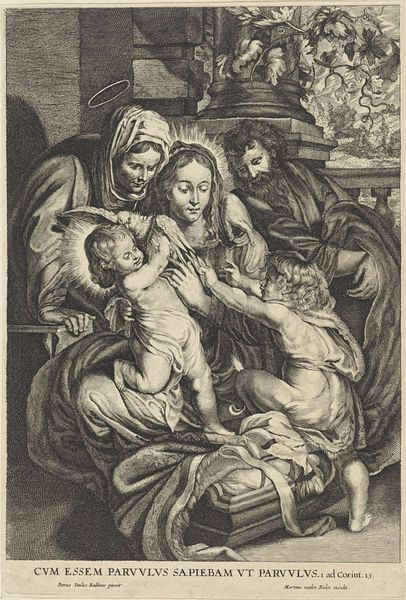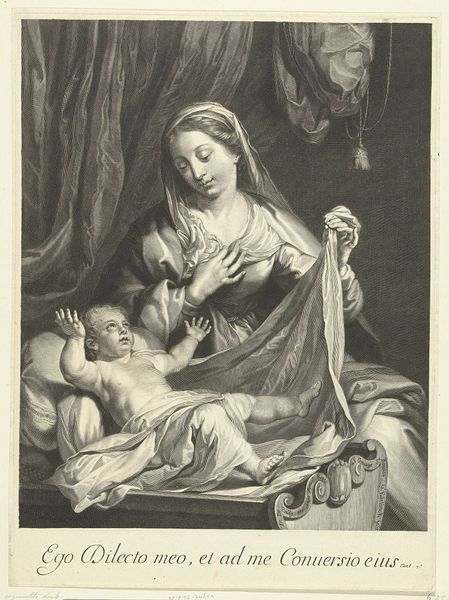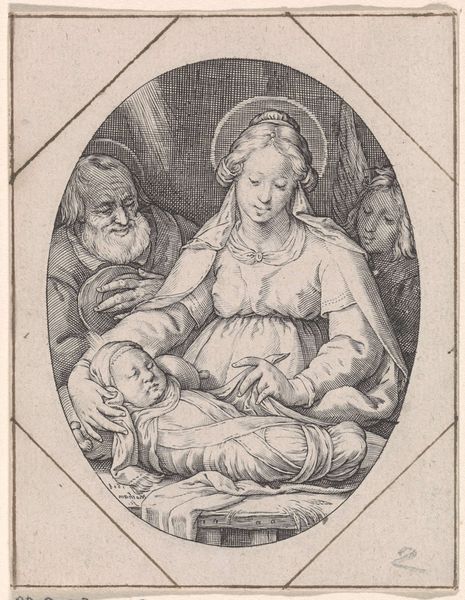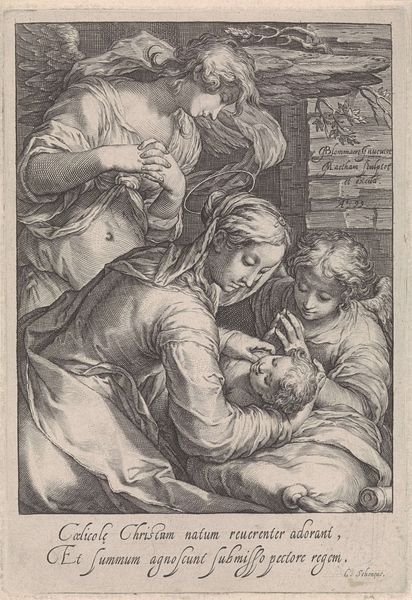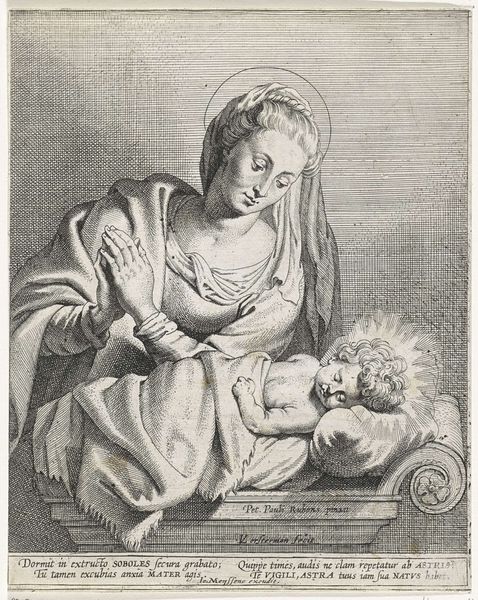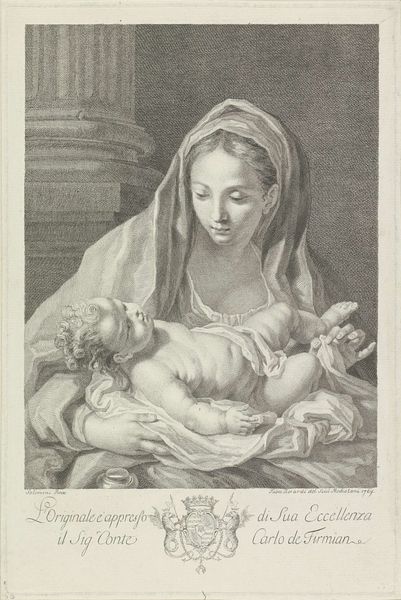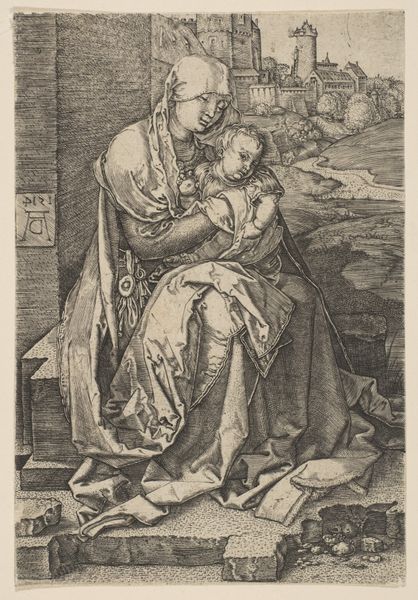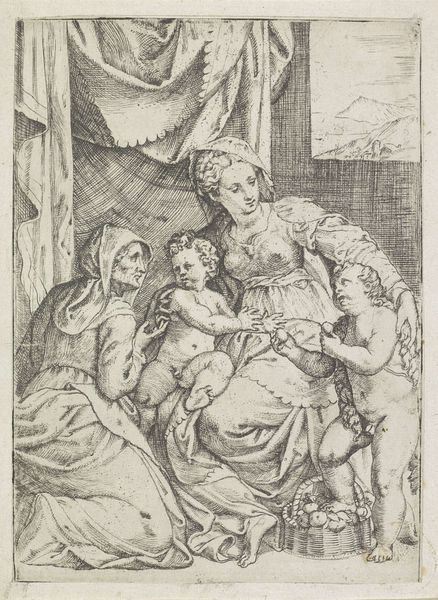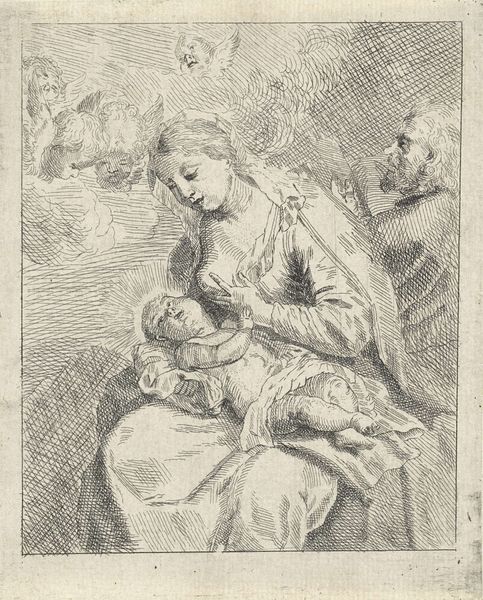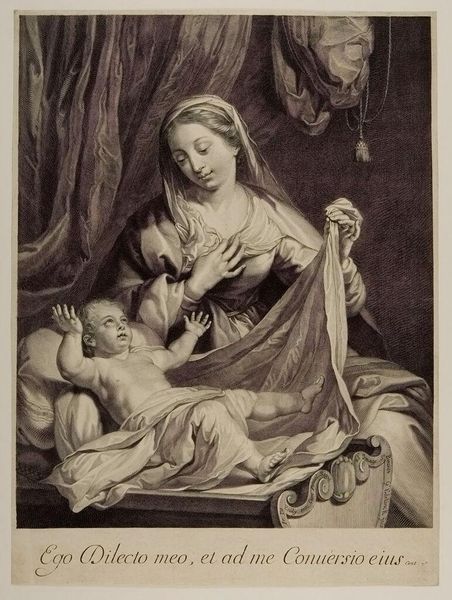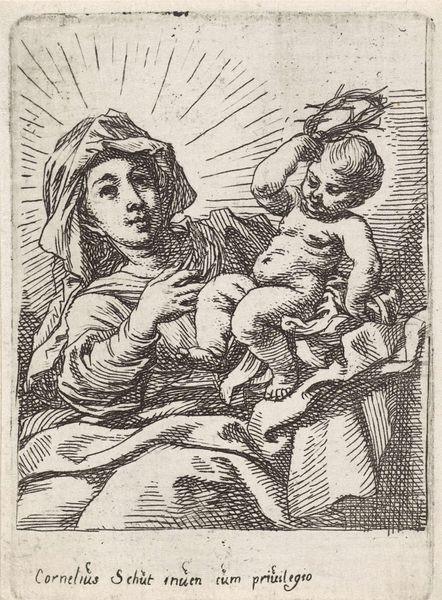
drawing, print, etching, ink, engraving
#
drawing
# print
#
etching
#
figuration
#
11_renaissance
#
ink
#
line
#
portrait drawing
#
history-painting
#
northern-renaissance
#
engraving
Dimensions: height 168 mm, width 122 mm
Copyright: Rijks Museum: Open Domain
Curator: This etching, made between 1610 and 1614 by Jacob Matham, depicts Mary laying the Christ child in a cradle. The work resides here at the Rijksmuseum. Editor: It strikes me as quite tender. The cross-hatching gives it an almost velvety texture, and the composition—the way Mary gazes down—is deeply evocative. Curator: Indeed, Matham's command of line and tone are crucial to its visual success. Note the way the light catches the fabric folds and creates depth despite the limited palette. There’s a clarity in his figuration; his choices generate a striking emotional depth that supports the thematic core. Editor: Focusing on the printmaking process, one has to admire the controlled labor involved in such intricate detail. The lines define form, yes, but they also emerge from a physical engagement with the plate—the repetitive scratching and etching becomes a sort of devotional act. Note how a mundane object such as the birdcage receives the same meticulous attention, reminding us to regard all materials with a discerning eye. Curator: The presence of the birdcage does lend itself to a richer understanding, especially regarding the symbolic program employed by the artist. Is it perhaps representative of the soul, ready to be released by Christ's coming? Editor: Or maybe a constraint? Consider the prevalent use of birds as trade objects during this period. Its inclusion adds a dimension of materiality—an acknowledgment of labor, consumerism, and societal constraints as they seep into the supposed purity of this holy scene. Curator: Your interpretation offers an avenue of understanding this artwork from a viewpoint beyond its stylistic features. Editor: Likewise, understanding how Matham negotiated the printmaking process grants new interpretive possibilities to even formal qualities. Thank you for pointing out this artwork's excellent graphic program!
Comments
No comments
Be the first to comment and join the conversation on the ultimate creative platform.
